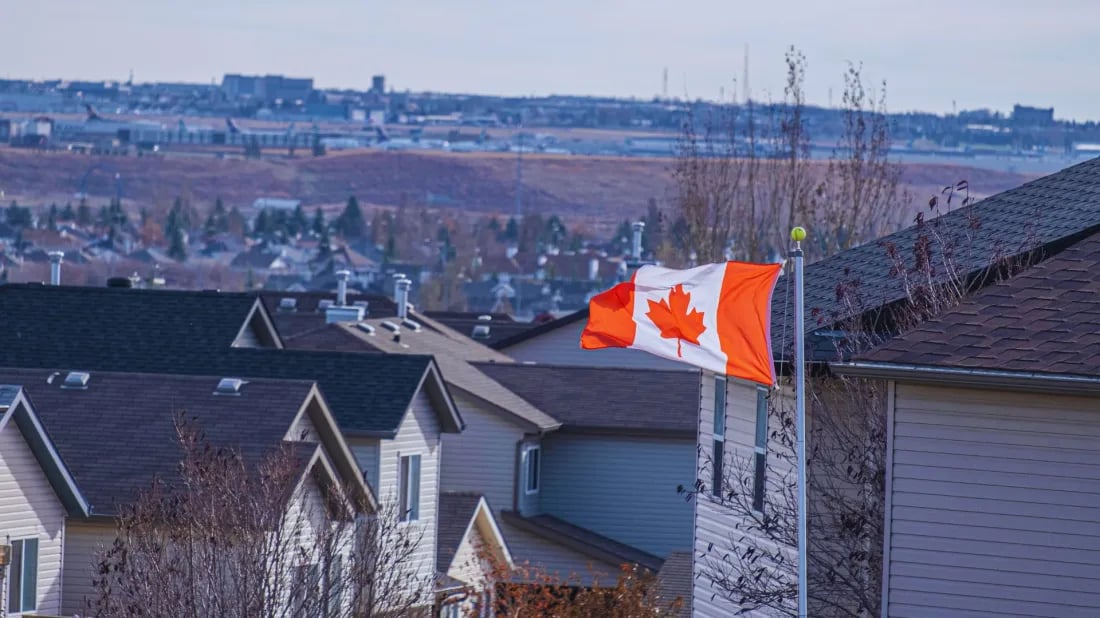What are the steps to buying a home? You’re starting to think about becoming a homeowner, or maybe you’ve even started to look at listings. Either way, you likely have lots of questions, from the general “how tos” to specific queries around financing, different home types and locations, to how to make an offer. To help simplify what can be a complicated process, we’ve outlined the steps to buying a house in Canada.
10 Steps to Buying a Home
There’s a lot to do, but we’ve narrowed it down. Here’s our 10-step home buying process checklist to get you started!
1. Start saving and budgeting for home ownership.
The first step to buying a home is saving a down payment, and this step typically starts long before the actual purchase takes place. The time it takes to save a down payment depends on the price of the home and your financial situation including your income, debts and lifestyle. With the price of homes in Canada, it can take some time to save the minimum five per cent, or the minimum 20% required if you want to avoid having to purchase mortgage loan insurance. The best advice is to start saving as soon as possible. There are other costs to budget for beyond the down payment, so knowing how much it will cost to buy a home and how much you can spend is a crucial step in making a wise investment.
2. Explore mortgage options and get pre-approved.
A mortgage pre-approval tells you how much your lender is willing to finance based on a number of factors, such as your credit rating, income and debts. The lender also guarantees the current interest rate for up to 120 days (time may vary depending on the lender), giving you the freedom to shop with the assurance that you’re insulated from interest rate increases. However if rates drop, your guaranteed rate should too. In addition to the interest rate, be sure to also consider the terms of the mortgage.
3. Choose a real estate agent that’s right for you.
Buying a home is a commitment and a huge investment. Find a real estate agent that’s knowledgeable, professional and responsive, to help you through the process. Treat your search for an agent like a job interview. Meet with a few different agents, ask lots of questions, and check references. Here is a list of 7 questions to ask an agent before you commit to get more information.
4. Start shopping.
Admittedly, this step has many sub-steps, but let’s narrow it down a bit. Location is key when choosing a place to live, however remote work has given homeowners greater flexibility when it comes to answering that all-important question of “where?” When it comes to “what,” there are many different types of homes suited to different household formations and lifestyles. Condominiums, townhomes, semis and detached houses each offer distinct benefits, so ensure you’re choosing something that will work for you over the next five years. Make a list-of must-haves and know what you’re willing to compromise on. Then it’s time to start viewing properties.
5. Make an offer.
You’ve found the home you want, in a location you like. Now, to make an offer to purchase for a price and terms that are agreeable to both you and the seller. Here’s where working with an experienced realtor can give you the upper hand. Different market conditions require a different approach – a seller’s market might mean lots of competition, requiring you to come in at or over asking price with few to no conditions, while a buyer’s market means you have choice and time is on your side. Lean on your agent on how to best handle the situation.
6. Get a home inspection.
Regardless of the market, this is one condition that we recommend you keep as part of your offer. The home inspection is intended to identify any existing or potential underlying problems in a home, alerting the buyer of risks and giving them leverage in negotiating a reduced selling price. Your home inspector will examine systems that are visible without opening walls or floors, including heating, plumbing, electrical, roofing and foundation. The inspection should take approximately three hours and will cost a few hundred dollars, depending on the size of the home.
7. Close the deal.
The closing period for your transaction can vary depending on the agreed upon terms in the Agreement of Purchase and Sale, but it is commonly 90 days. The homebuyer has some important obligations during this waiting period. Once the offer has been accepted, there’s a window during which you must take all the necessary steps with regard to your offer conditions, such as financing, home inspection and anything else that needs to happen before you officially can take ownership of the home. Your mortgage lender will need a copy of the offer to ensure it’s in-line with your pre-approved level of financing. After any adjustments or repairs have been completed to your satisfaction, your real estate agent will finalize the deal and your lawyer will process the paperwork, including the mortgage documents with your lender. All of this will point to a final date of actual legal possession: the real closing day.
8. Update utilities, transfer services and change-of-address.
During your closing period, keep track of utility and credit card bills, magazine subscriptions and any other regular mail or standing orders that you receive at your current address. Alert them of the address change in advance of your closing date. Also be sure to contact your doctor and dentist. For family and friends, you can easily send a change of address card via mail or email, but there are a few more steps when it comes to informing government agencies.
- Click here to change your address with the Canada Revenue Agency
- Contact your local Ministry of Health and Ministry of Transportation to find out how to change your address on your health card and driver’s license.
- Forward mail to your new address by visiting the Canada Post website or at your local post office.
- If applicable, it is important to change your address for the Employment Insurance program that you can easily do here.
9. Pack and move.
If you’re moving during the busy season (typically summer) ensure you’ve booked a moving company well in advance. If you’re doing it yourself, remember to reserve the truck, enlist some help and ensure you have ample packing materials. Here are some packing tips:
- Pack the items you will need first in a clear plastic bin
- Pack your plates vertically so they are less likely to break
- Take a photo of how you electronics are connected so you can know where the wires go
- Wrap your breakables in clothing to save on bubble wrap
- Keep your glassware safe by packing it with clean socks
10. Enjoy your new home!
Connect with a Steven Liambas to start your home search today!




